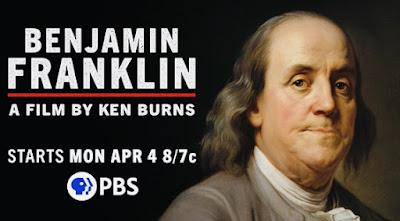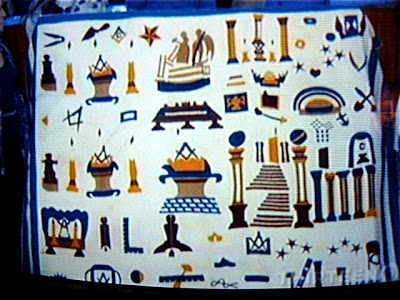 |
| East Bay Media Group |
Historic Washington Lodge 3 in Rhode Island will star in a forthcoming PBS history program, according to local media.
The Warren Times-Gazette reports today how the lodge, which dates to June 24, 1796, will be featured on Rhode Island PBS’ Treasures Inside the Museum next month. The following is copyright © 2024 East Bay Media Group:
By Ethan Hartley
New England is a historical spelunker’s paradise. It’s a place where a day trip to any random corner of the region can result in stumbling upon some type of rare artifact or another that hearkens back to the earliest days of our colonial past, or perhaps even beyond that.
Warren, certainly, has its fair share of transportive treasures—both in objects carried down through generations held within historic walls, to the actual buildings themselves. And coming soon to a PBS station near you, one particular local location, and one particularly special historic artifact, will have its moment in the spotlight.
Washington Lodge No. 3, located at 39 Baker St. in Warren’s downtown historic district, boasts a title of the second oldest continuously operating Freemasons lodge in the United States, first opening up in June of 1796. The building has undergone renovations and although it is not technically a museum, the board of directors that take care of the building have been consistently seeking to share its vibrant history with anyone interested through a variety of open houses and events throughout the year.
John Miranda, a member of the board and the Junior Deacon at the lodge, said that he reached out to Rhode Island PBS last year to see if they were interested in visiting the lodge while they were taping the fifth season of the New England Emmy-nominated series, Treasures Inside the Museum. The show, produced by a collaboration of Ocean State Video and Weathervane Communications, took him up on the invite and visited Warren on December 28, 2023 to shoot the segment featuring the Washington Lodge.
Miranda said that the building’s history will be explored in the segment, along with some of the interesting Egyptian murals, and historical objects from the Freemasons of generations past.
“We explore traditional museum spaces in season five and the unexpected locations where treasures are kept,” said Betty-Jo Cugini, series co-producer and owner of Weathervane Communications. “We are excited to take viewers behind the scenes as exhibits come to life, from ideas shared around a table to an opening-night exhibit where unique treasures and cultures come together.”
One particular item from the lodge is sure to turn some heads and pique some interest among historical buffs: a water pitcher that was owned by George Washington. Miranda said it was given to the lodge by the family of George Washington’s quartermaster, but you’ll have to tune into the show to get the full story.
The show featuring Warren will air on July 19 at 8:30 p.m., July 20 at 12:30 p.m., and July 21 at 7 p.m. Warren will share a show with The Sailing Museum & National Sailing Hall of Fame in Newport.
“They were very excited to do a story about us,” Miranda said. “It’s exciting just to have the lodge featured on PBS and to let people see what’s in the building, because I’m sure there’s always mystery about what’s going on in a Freemasons lodge. At least we can now give them a little peek behind the curtain.”















































































